Whale processing
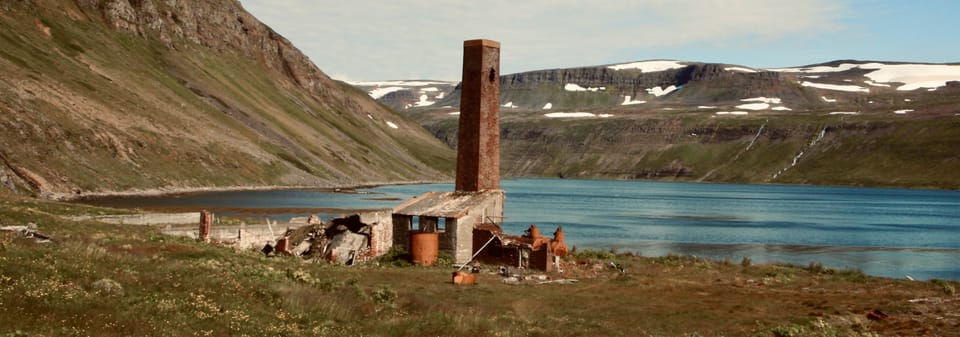
On a fjord in the far north west of Iceland, on the Hornstrandir peninsula, there is a long-disused Norwegian whale-processing factory.
To reach the Hornstrandir is not a simple matter. It is a remote place. There are helicopter patrols in the early spring, sweeping the northern coast for the polar bears which occasionally come over from Greenland, or down from the far north, on stray ice flows; lost on the Hornstrandir they wander among the litter of great trees and fishing detritus which washes up on the shore of the Arctic Ocean. If found, the bears are shot.
There are no roads to the peninsula. You can drive a certain way towards it and leave your car, but you are still a day’s walk from the peninsula proper. Or you can take a boat from the little capital of the Westfjords, as this anfractuous northwestern corner of Iceland is called, and this is what my brother and I do.
We drive up to Ísafjörður from Reykjavik; the roads from time to time give out, awaiting resurfacing after the long winter, and there is a lot of winding around fjords to be done. The drive is an all-day, minor epic. And then in Ísafjörður you leave the car and embark on a little boat, and motor over to the Hornstrandir peninsula, where you disembark on a small jetty and are left to roam around for several days until the boat comes back, weather permitting.
And it is from the boat to the Hornstrandir that I see my first whale. I have seen porpoises and dolphins a-plenty over the years, and once off the coast of Arran in Scotland the long still silhouette of a basking shark; but from the Hornstrandir boat I see, first, up along the fjord, plumes, water-spouts; it takes me a moment to process, but then I say to my brother ‘whale!’, and point, just in time for us to see its uplifted great flukes flash for a second in the sun, and disappear.
The whale, of unknowable species, was taking a risk, I think, in these waters. The Icelanders still eat them, or perhaps just sell their meat to tourists; there is whale on a tasting menu in a restaurant in Reykjavik where I have eaten; and I have ordered whale steak in a restaurant in Tromsø, in Norway—when we ask the waitress what sort of whale we are eating, she says that they do not get to choose, these are steaks cut from the flank of a whale they have done ‘researching’, but since we ask, it is a sperm whale. The steaks are like beefsteaks, but taste liverish, from the iron in the blood, I suppose; in Reykyavik it is minke whale that we eat, and it is not liverish at all.
But this whale off the Hornstrandir is alive and sporting in the sunlit waters, and all is apparently well with it. It does not reappear. No one else aboard seems to have seen it. Or perhaps whales are too commonplace to merit a mention, like the puffins which skitter endlessly off across the still water from in front of our prow.
And so we disembark and walk over the peninsula for a few days, and encounter other fauna, bird life. No polar bears (although approaching the desolate northern shore we get a brief fright from a large white washed-up fishing crate away in the distance); and then, on our last day, we visit the whaling station.
It is a short walk up the fjord. There is no one about. We explore the brick ruin and paddle in the fjord in the sun, and keep an eye out for white-tailed eagle.
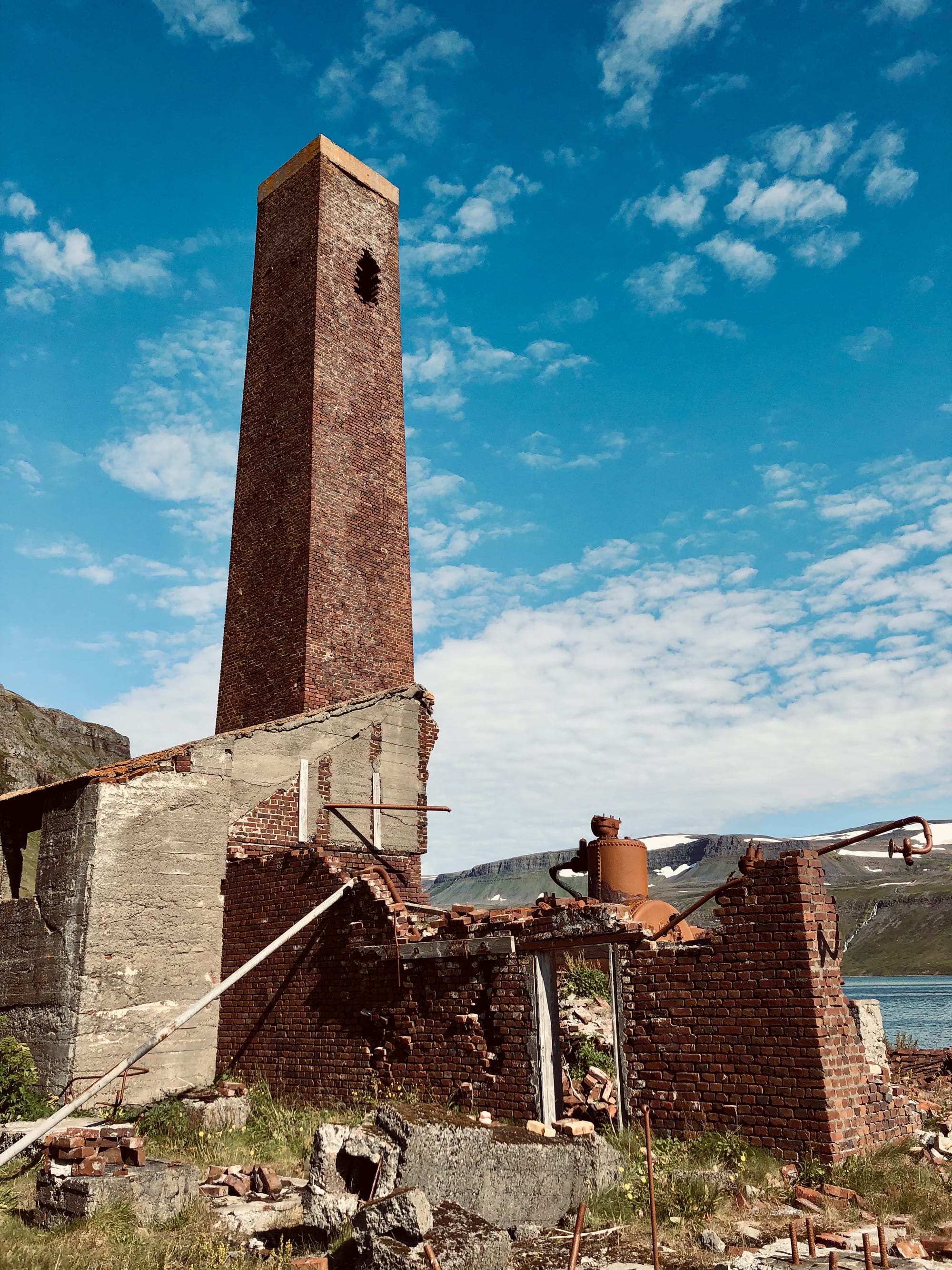
…
W.H. Auden, travelling in Iceland with Louis MacNeice in 1936, saw a whale processing factory like ours, but in operation.
I wish I could describe things well, for a whale is the most beautiful animal I have ever seen. It combines the fascination of something alive, enormous, and gentle, with the functional beauties of modern machinery. A seventy-ton one was lying on the slip-way like a large and very dignified duchess being got ready for the ball by beetles. To see it torn to pieces with steam winches and cranes is enough to make one a vegetarian for life.
In the lounge the wireless was playing ‘I want to be bad’ and ‘Eat an apple every day’. Downstairs the steward’s canary chirped incessantly. The sun was out; in the bay, surrounded by buoys and gulls, were the semi-submerged bodies of five dead whales: and down the slip-way ran a constant stream of blood, staining the water a deep red for a distance of fifty yards. Someone whistled a tune. A bell suddenly clanged and everyone stuck their spades in the carcase and went off for lunch. The body remained alone in the sun, the flesh still steaming a little. It gave one an extraordinary vision of the cold controlled ferocity of the human species.
I got back here this afternoon about tea-time, and have been trying to read through my enormous pile of correspondence…
W.H. Auden and Louis MacNeice, Letters from Iceland
…
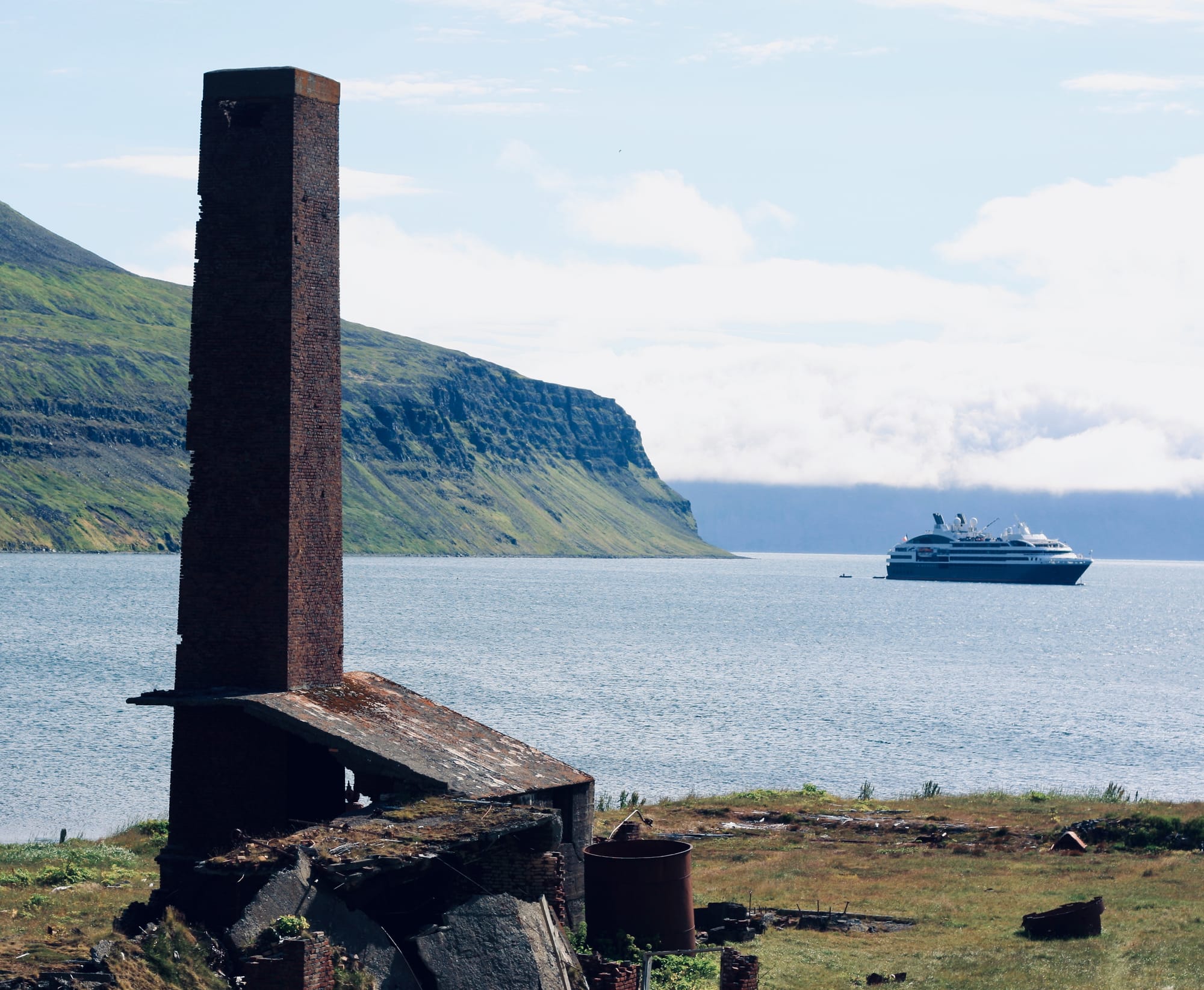
As my brother and I sit and ponder the beauty of nature and the cold horrors of mankind in the sun of a short Icelandic summer, a cruise ship appears around the headland. It rapidly (but not that rapidly) disgorges a flotilla of zodiacs bearing American tourists; they are wearing bright red lifejackets which show scarlet as the zodiacs bounce over the fjord towards us; in half-an-hour we are no longer alone, ant-like streams of people come along the path to the whaling station.
And in fact, it is not a whaling station. From 1927 until its closure in the late 1940s it gave up the whales and processed herring instead. Good perhaps for the great grey whale; bad for the fine silver herring. We have not improved the world, merely refined it.
…
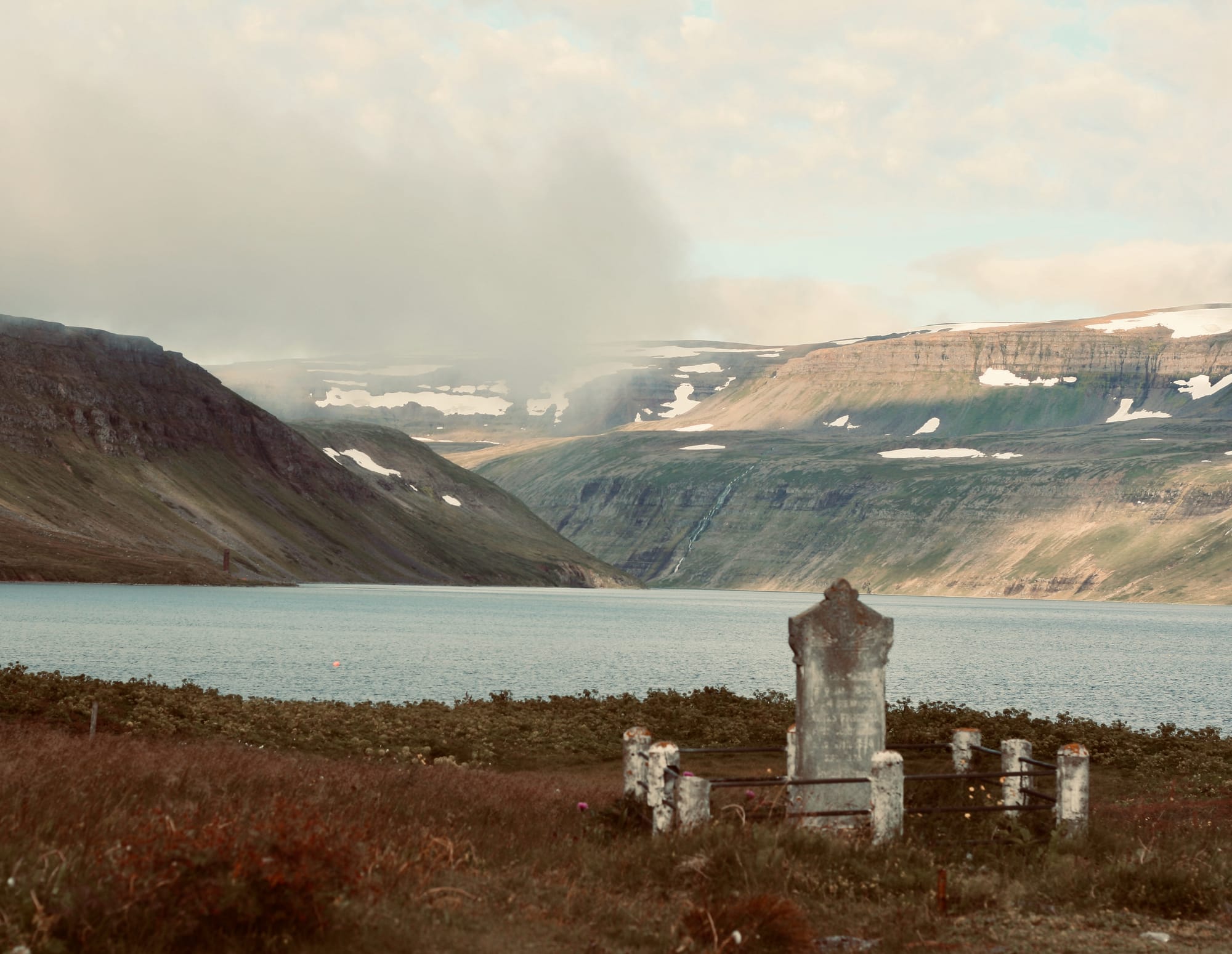
The village associated with the whaling, and then fishing, factory, Hesteyri, was abandoned along with the factory just after the war. There remains a little cemetery overlooking the fjord, and a few houses have now been restored by the descendants of their inhabitants, for use as summer residences.
One of them is a café which mainly serves the cruise-ship people. They are expecting waves of cruise-ship people just now, hungry and thirsty from their walk over the ruins, and they try to wave my brother and I, scruffy pair that we are, away; but in the end they relent, and find us a corner table, and we sit and drink hot coffee, and wait for our own small boat back to the mainland, and perhaps a final glimpse of fins out of water, or a shiver of darting silver herring just beneath.
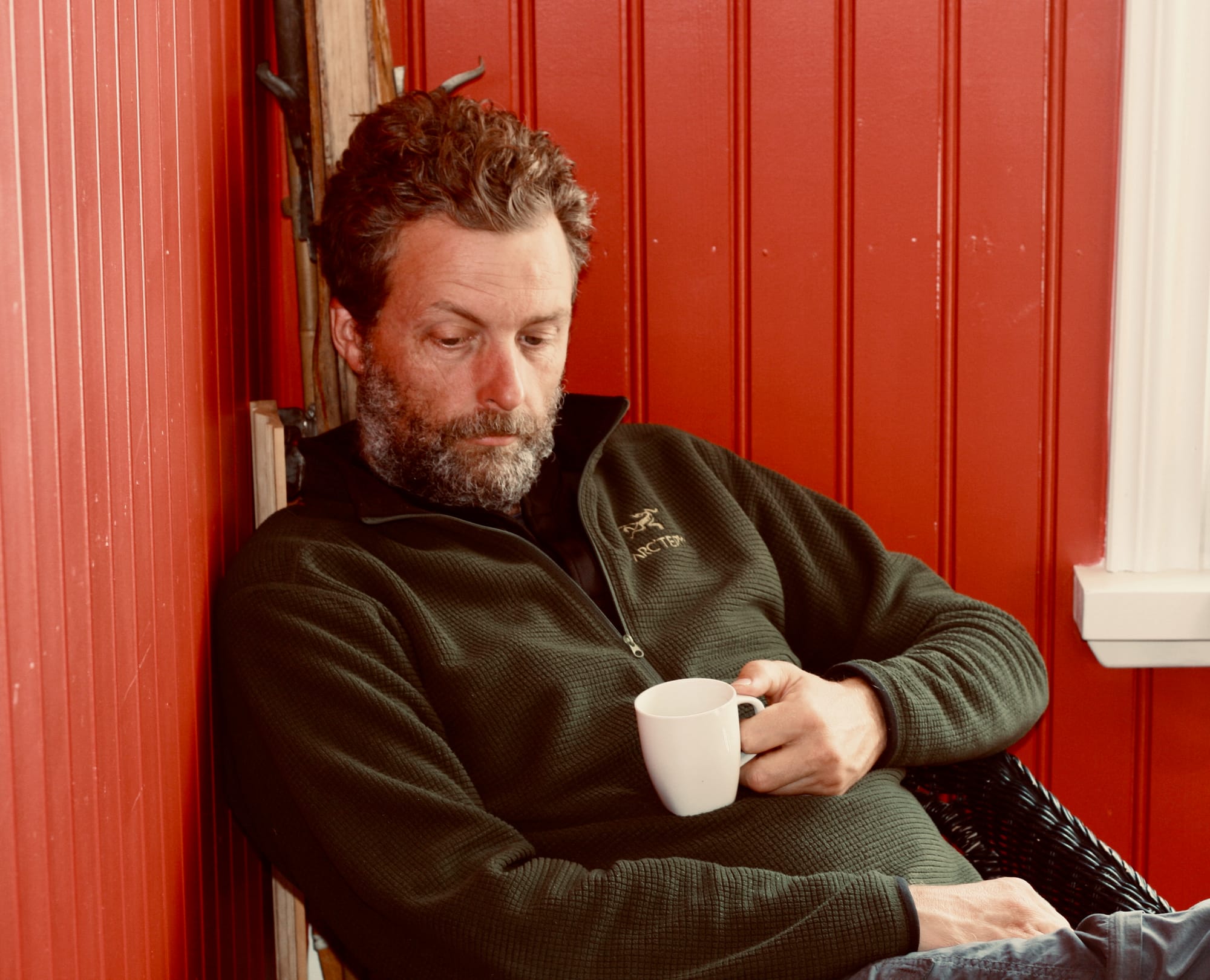

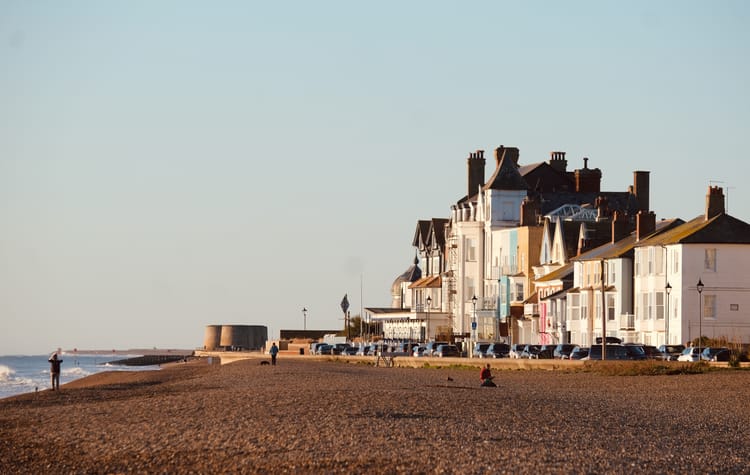
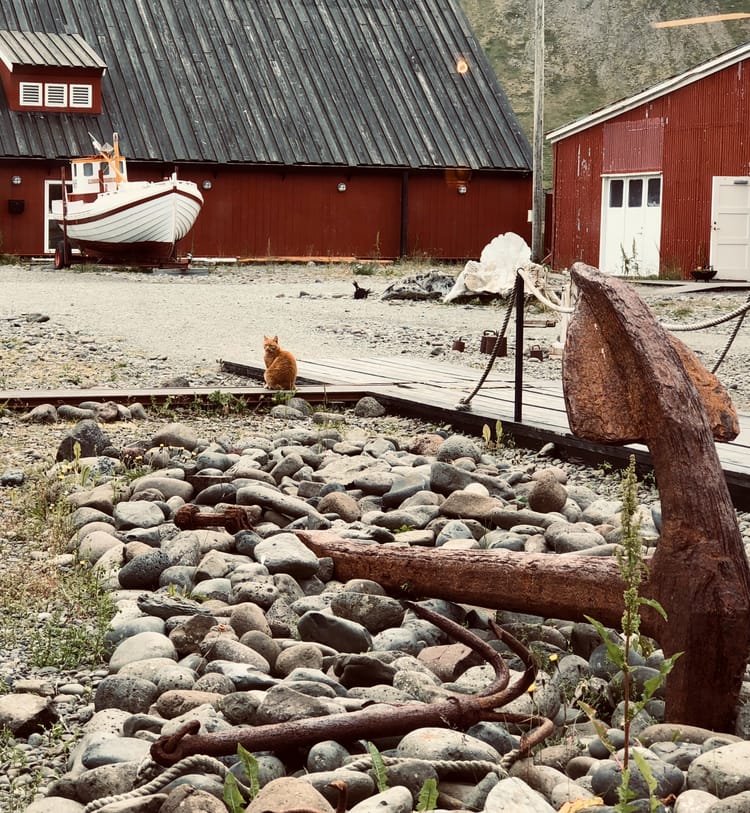
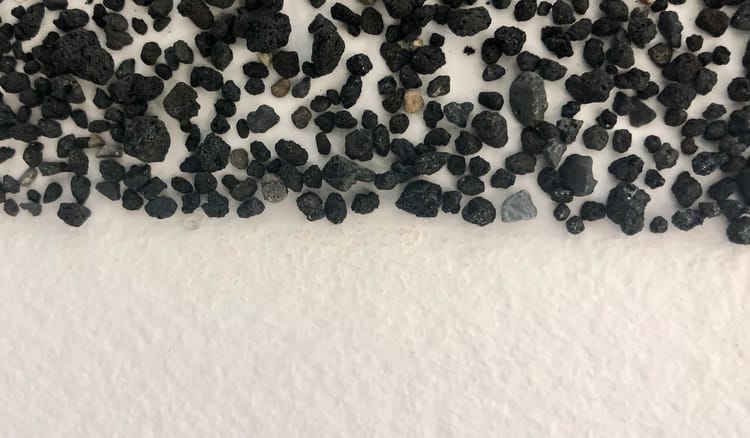
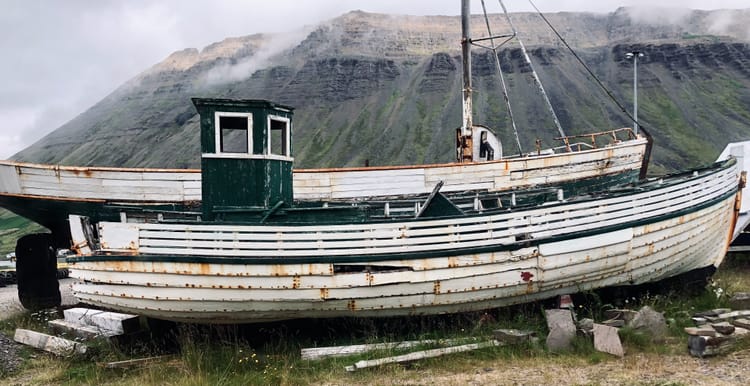
Member discussion